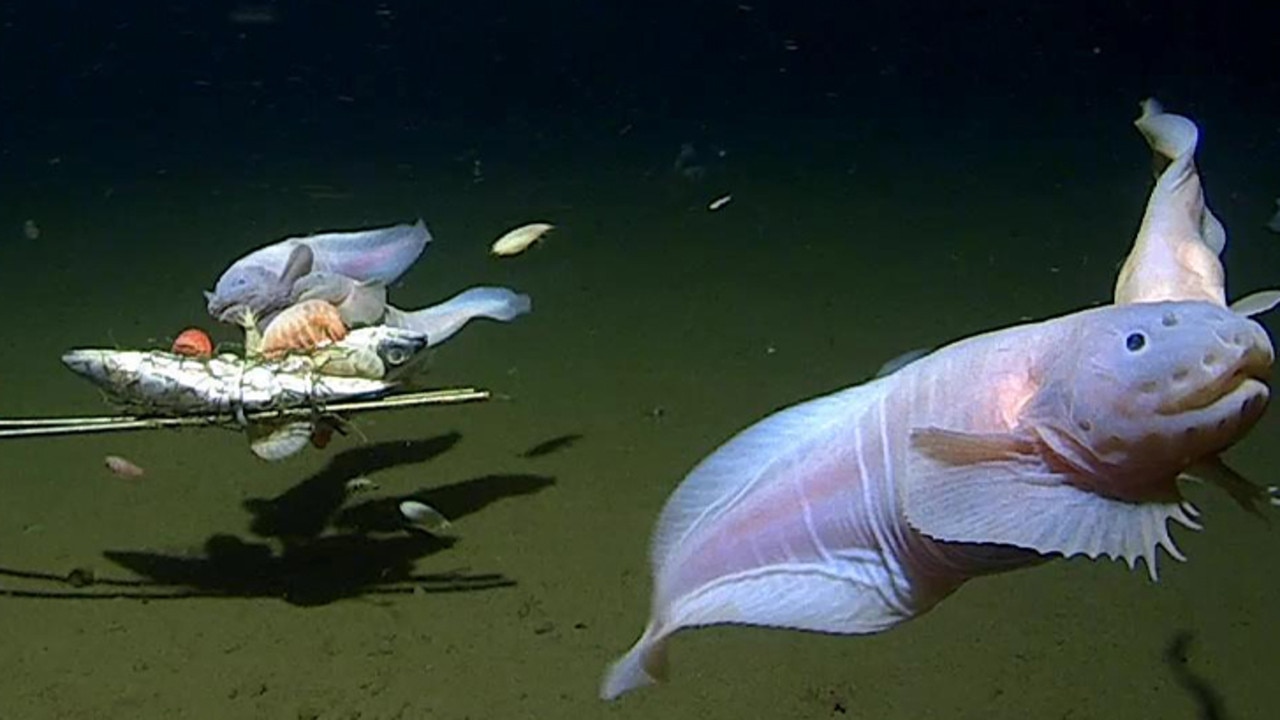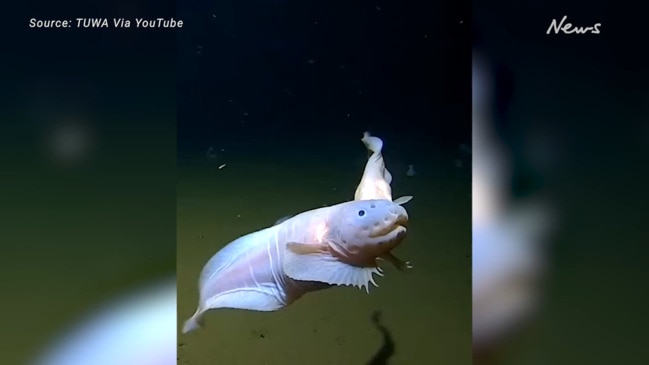New record set for fish found 8km below surface of the ocean
Australian researchers have found schools of gelatinous snailfish 8km beneath the surface of the Pacific Ocean, the deepest any fish have ever been found

READING LEVEL: GREEN
Gelatinous* snailfish have been filmed 8km beneath the surface of the Pacific Ocean, a record depth for any fish.
Australian researchers, led by Scottish deep-sea explorer Professor Alan Jamieson, lowered cameras to 8336m to film the fish in the Izu-Ogasawara oceanic trench* off Japan.
Professor Jamieson, who moved to Australia 18 months ago to head the Minderoo-University of Western Australia Deep-Sea Research Centre, said that until now no one had ever filmed or collected fish at such depths, where the pressure is 800 times that at the surface.
In 2019 a submersible* took Professor Jamieson down to more than 7km in the Java Trench in the Indian Ocean, one of the most isolated points on the planet. He had earlier predicted that fish could be found as deep as 8km.
Professor Jamieson said he believed his team had found the maximum depth at which any fish could survive.

“I think there’s probably no more significant increase in depths to be had,” he said.
“I think from now on it will just be incremental* – maybe five, maybe 10m.”
Video cameras controlled from the surface captured footage of the snailfish. The team also managed to trap fish at a depth of 8022m, breaking the record for the deepest point from which fish have been collected.
Adult snailfish – Pseudoliparis belyaevi – are about 25cm long. Depending on the species they can survive in waters ranging from a few metres deep to the depths where Professor Jamieson found them.
The deep sea variety is uniquely well-equipped to survive. The fish are largely gelatinous to avoid using energy in an environment where there is not much food or on maintaining skin and scales.
“They have basically chipped away everything that a fish has that is kind of unnecessary,” Professor Jamieson said.
“They use a gel rather than skin. Their bone density* is very low, so they don’t need a lot of buoyancy*. It has refinements* in every department.

“They sort of don’t fit the stereotype* when you say to someone, what are the deepest fish in the world … you see this ridiculous little pink thing.”
To film the fish, Professor Jamieson’s team used a lander, which is a device equipped with cameras, sensors and bait, that was released into the ocean with a 100kg weight to sink it. Able to reach depths of almost 11,000m, the devices go too deep to be tethered to a ship’s cables. Instead they are controlled by acoustic signals* that can instruct the lander to release its weight so the equipment, with recordings or trapped fish, can return to the surface.
This story was first published in The Times and is reproduced here with permission

GLOSSARY
- gelatinous: thick and sticky, like jelly
- oceanic trench: long, narrow drops on the sea floor
- submersible: a ship capable of operating under water
- incremental: increasing or adding on, especially in a regular series
- bone density: a measure of the amount of minerals contained in a certain volume of bone
- buoyancy: the act of floating
- refinements: the act or process of removing unwanted substances
- stereotype: a widely held but very simplified image or idea of a particular type of person or thing
- tethered: fastened with a rope, chain, or the like to limit the range of movement
- acoustic signals: noises that animals produce in response to a specific stimulus, such a heat or light
EXTRA READING
Explorer’s lost ship found after 107 years
First-ever Aussie sighting of bigfin squid
Insulin that mimics venom of deep-sea snail
QUICK QUIZ
- Who led the deep-sea exploration of the Pacific Ocean?
- This article mentions “one of the most isolated points on the planet”. Where is that?
- What is the record for the deepest point from which fish have been collected?
- What are adult snailfish called and what is their size?
- Why have adult snailfish had “refinements in every department?”
LISTEN TO THIS STORY
CLASSROOM ACTIVITIES
1. Are you a ridiculous little pink thing?
Imagine that you are a snailfish. How would you feel about being called ‘a ridiculous little pink thing’? Write a letter to Kids News about this. Use information in the story to help you to make points about how great you really are.
Time: allow 20 minutes to complete this activity
Curriculum Links: English, Science
2. Extension
Do you think that a snailfish that lives only a few metres deep in the ocean would be different to the snailfish that live in the deepest part of the ocean? Write a list of reasons why or why not. Use information in the story to help you.
Time: allow 20 minutes to complete this activity
Curriculum Links: English, Science
VCOP ACTIVITY
New fish species profile
Who knows what amazing creatures can be found in the depth of the ocean. Look at the unique adaptations this fish has taken on in order to survive at that depth.
Create a new fish species profile and invent a new species yet to be discovered. Include a profile picture, a common name, a Latin name, features of the fish, habitat, food source, size, behaviour, predators, and any other interesting or unique facts you can include.
Share your new fish with the class.
Extension
Write a news report announcing the discovery of your new fish. Decide if it will be a report for the newspaper, radio or TV. Then present it to your class in your chosen format.

